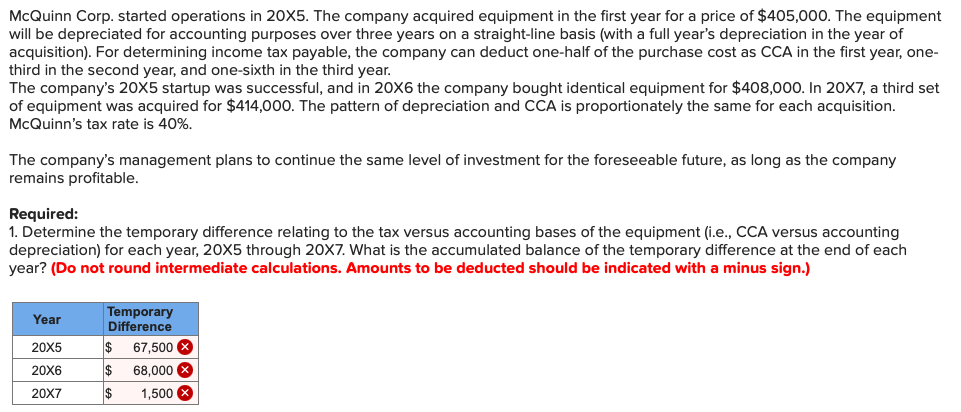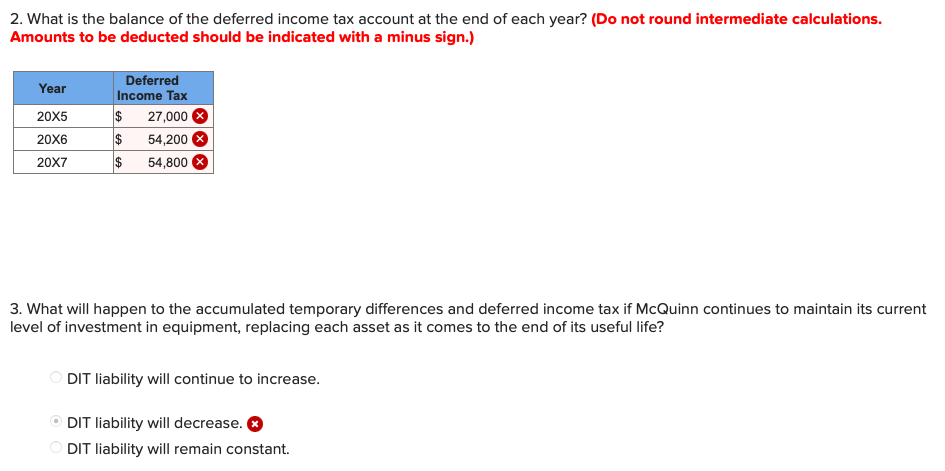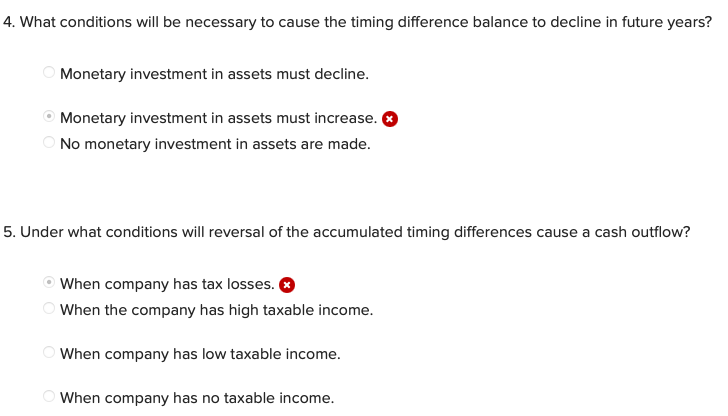


McQuinn Corp. started operations in 20X5. The company acquired equipment in the first year for a price of $405,000. The equipment will be depreciated for accounting purposes over three years on a straight-line basis (with a full year's depreciation in the year of acquisition). For determining income tax payable, the company can deduct one-half of the purchase cost as CCA in the first year, one- third in the second year, and one-sixth in the third year. The company's 20x5 startup was successful, and in 20x6 the company bought identical equipment for $408,000. In 20X7, a third set of equipment was acquired for $414,000. The pattern of depreciation and CCA is proportionately the same for each acquisition. McQuinn's tax rate is 40%. The company's management plans to continue the same level of investment for the foreseeable future, as long as the company remains profitable. Required: 1. Determine the temporary difference relating to the tax versus accounting bases of the equipment (i.e., CCA versus accounting depreciation) for each year, 20x5 through 20x7. What is the accumulated balance of the temporary difference at the end of each year? (Do not round intermediate calculations. Amounts to be deducted should be indicated with a minus sign.) Year Temporary Difference $ 67,500 20X5 20X6 $ 68,000 1,500 20X7 $ 2. What is the balance of the deferred income tax account at the end of each year? (Do not round intermediate calculations. Amounts to be deducted should be indicated with a minus sign.) Year 20X5 20X6 20X7 Deferred Income Tax $ 27,000 $ $ 54,200 X $ 54,800 X 3. What will happen to the accumulated temporary differences and deferred income tax if McQuinn continues to maintain its current level of investment in equipment, replacing each asset as it comes to the end of its useful life? DIT liability will continue to increase. DIT liability will decrease. DIT liability will remain constant. 4. What conditions will be necessary to cause the timing difference balance to decline in future years? Monetary investment in assets must decline. Monetary investment in assets must increase. No monetary investment in assets are made. 5. Under what conditions will reversal of the accumulated timing differences cause a cash outflow? When company has tax losses. When the company has high taxable income. When company has low taxable income. When company has no taxable income









